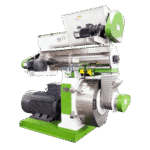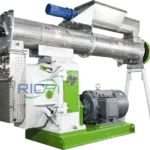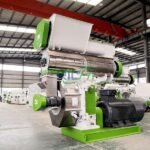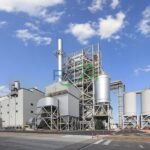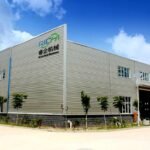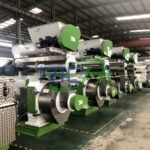Fish feed pellet making machines are highly adaptable equipment designed to manufacture various types of aquatic feed. A common inquiry within the aquaculture industry is whether these machines can effectively produce sinking fish feed. The answer is a definitive yes—most fish feed pellet making machines can indeed create high-quality sinking fish feed. This article delves into the capabilities of these machines in producing sinking feed, the advantages of sinking feed, and the specific requirements involved in its production.
Understanding Sinking Fish Feed
Sinking fish feed is formulated to sink to the bottom of the water column, making it ideal for:
- Bottom-feeding fish species such as catfish, carp, and certain marine species
- Shrimp and other crustaceans
- Scenarios where minimizing feed loss is essential
The key to creating sinking feed lies in managing the density of the pellets to ensure they are denser than water.
Types of Fish Feed Pellet Making Machines
Several types of fish feed pellet making machines are capable of producing sinking feed:
- Dry Type Fish Feed Extruder: This machine can produce dense, sinking pellets and is suitable for small to medium-scale production.
- Wet Type Fish Feed Extruder: This versatile option can create both sinking and floating feed by adjusting specific parameters, making it ideal for larger-scale production.
- Twin-Screw Extruder: Highly efficient for producing a variety of feed types, including sinking feed, this machine offers precise control over the characteristics of the feed.
- Ring Die Pellet Mill: Primarily designed for high-volume production of dense, sinking pellets.
- Flat Die Pellet Mill: Similar to the ring die version, it produces dense sinking pellets and is more suited for smaller-scale operations.
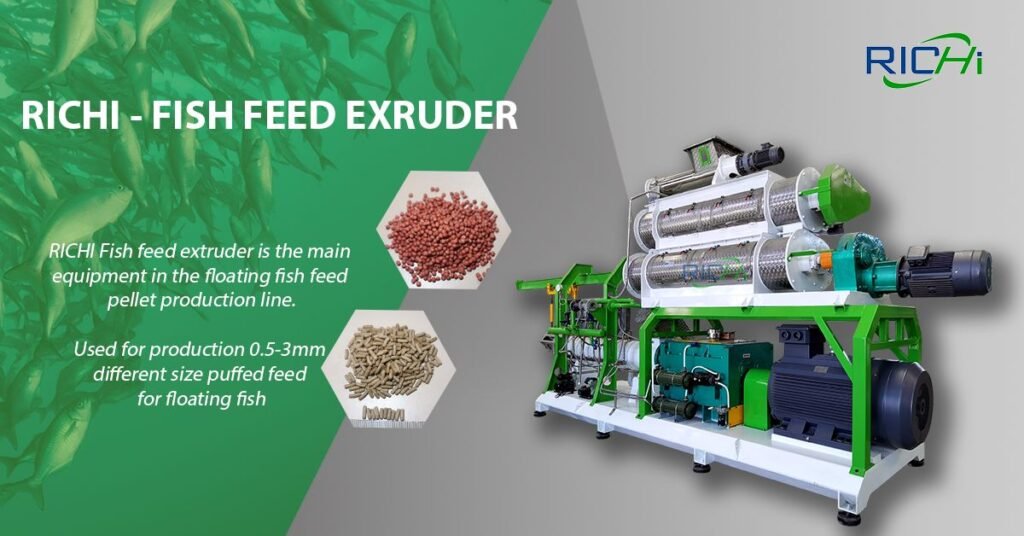
Capabilities of Fish Feed Pellet Making Machines for Sinking Feed
Fish feed pellet making machines feature several functionalities that make them well-suited for producing sinking feed:
- Density Control: The ability to adjust compression and extrusion parameters to achieve the desired pellet density.
- Ingredient Flexibility: Capability to process a wide array of ingredients, including those that contribute to higher density.
- Moisture Management: Control over moisture content affects both pellet density and sinking rate.
- Temperature Regulation: Adjusting processing temperature influences the structure and density of the pellets.
- Pellet Size Variation: The ability to produce pellets of different sizes to accommodate various fish species and life stages.
Process of Producing Sinking Fish Feed
The production process for sinking fish feed typically involves the following steps:
- Ingredient Preparation: Grinding and mixing raw materials.
- Conditioning (for wet extruders): Adding steam and water to adjust moisture content.
- Extrusion or Pelleting: Compressing the feed mixture under high pressure. For extruders, this step involves cooking the mixture at high temperatures.
- Cutting: Dividing the extruded or pelleted material into the desired lengths.
- Drying (if necessary): Reducing moisture content to ensure stability.
- Cooling: Bringing the pellets to ambient temperature.
- Coating (optional): Adding oils, vitamins, or other heat-sensitive ingredients.
Factors Affecting Sinking Properties
Several factors influence the ability to produce effective sinking feed:
- Ingredient Composition: Higher levels of dense ingredients, such as fish meal, contribute to the sinking properties.
- Moisture Content: Lower final moisture content typically results in denser and faster-sinking pellets.
- Processing Temperature: Lower extrusion temperatures generally produce denser pellets.
- Compression Ratio: A higher compression ratio in pellet mills leads to denser pellets.
- Pellet Size and Shape: Smaller, more compact pellets tend to sink faster.
- Additives: Certain additives can be used to increase pellet density.
Benefits of Using Fish Feed Pellet Making Machines for Sinking Feed Production
These machines provide several advantages in sinking fish feed production:
- Consistency: They produce uniform pellets with consistent sinking rates.
- Customization: Machines allow for adjustments to meet specific sinking rate requirements.
- Nutrient Retention: Controlled processing helps preserve heat-sensitive nutrients.
- Efficiency: They offer high-capacity production capabilities for commercial-scale operations.
- Versatility: Many machines can produce both sinking and floating feed.
- Water Stability: Capable of producing pellets that maintain their integrity in water for extended periods.
Challenges and Considerations
While fish feed pellet making machines can process sinking feed, there are challenges to be mindful of:
- Ingredient Selection: Formulations may need adjustments to achieve the desired sinking properties.
- Energy Consumption: Producing dense, sinking pellets may require more energy than creating floating feed.
- Wear and Tear: Processing dense feed can increase wear on machine components.
- Quality Control: Ongoing monitoring is necessary to ensure proper sinking characteristics.
- Post-Production Handling: Dense pellets may require special handling to prevent breakage.
Case Studies and Industry Trends
Numerous success stories showcase the effective use of fish feed pellet making machines for sinking feed production:
- A catfish farm in the southern United States reported a 15% improvement in feed conversion ratios after switching to custom sinking feed produced by a twin-screw extruder.
- A shrimp farm in Ecuador observed reduced feed waste and improved water quality using slow-sinking pellets produced by a wet type fish feed extruder.
- A marine fish hatchery in Norway successfully developed species-specific sinking feeds for cod larvae using a specialized micro-pellet extruder.
Industry trends indicate ongoing advancements in sinking feed production:
- Increased utilization of alternative protein sources in sinking feed formulations.
- Development of slow-sinking pellets for enhanced feeding efficiency.
- Research focused on improving the water stability of sinking pellets for longer feeding durations. (Related post: fish feed pellet machine price)
Conclusion
Fish feed pellet making machines are indeed capable of producing high-quality sinking fish feed. These machines offer the necessary control over pellet density, size, and composition to create feed that sinks at the desired rate. The ability to produce sinking feed is crucial for many aquaculture operations, particularly those involving bottom-feeding species or operating in environments where feed loss must be minimized.
For fish farmers and feed manufacturers, the versatility of these machines in producing both sinking and floating feed provides flexibility in meeting diverse aquaculture needs. As the aquaculture industry continues to grow and diversify, the demand for specialized sinking feeds is likely to increase, making the capability to produce such feed an important consideration in equipment selection and feed production strategies.
By understanding the capabilities and requirements for producing sinking fish feed, aquaculture operators can make informed decisions regarding feed production equipment and processes, ultimately contributing to more efficient and sustainable fish farming practices.
